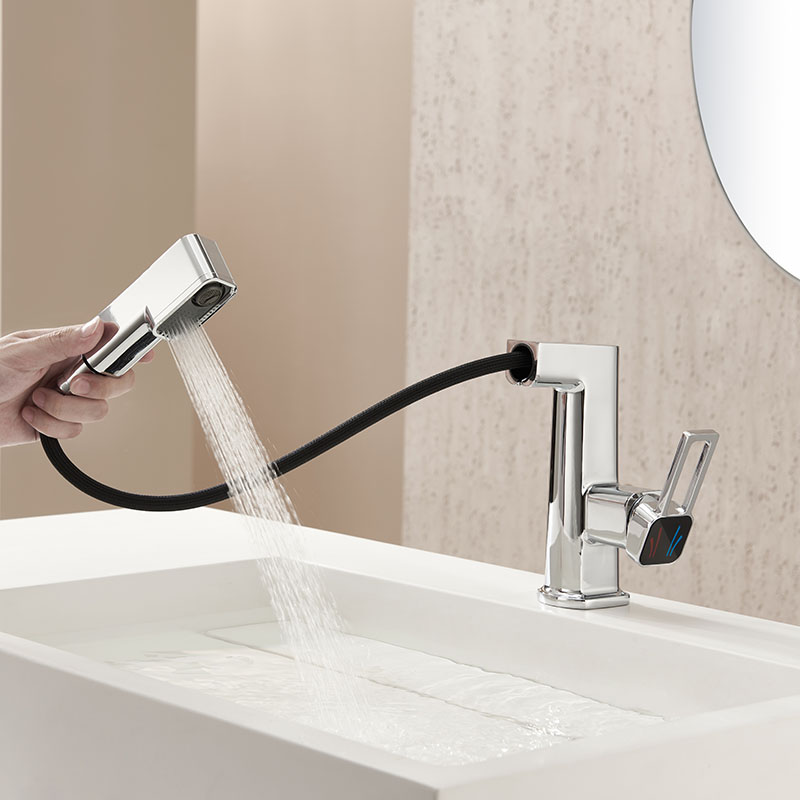Optimization Of after-Sales Service System in Sanitary Ware Industry And Improvement Of Customer Loyalty
At a time when sanitary ware products are becoming more homogeneous and market competition is fierce, the correlation between the perfection of after-sales service system and customer loyalty is becoming more and more significant.
1. Core pain points and reconstruction paths of after-sales service system
Bottleneck of traditional after-sales model
Delayed response: scattered repair channels, average response time exceeds 24 hours;
Different service standards: third-party repair outlets have different technical levels, and customer satisfaction fluctuates by 40%;
Data islands: repair records, spare parts inventory and customer portraits are not connected, and the efficiency of root cause analysis is low.
Intelligent service network construction
Omni-channel access: integrating 400 telephones, APPs, mini-programs and other entrances, AI customer service diverts 80% of routine consultations, and manual processing time is increased by 3 times;
Intelligent dispatch system: based on LBS positioning, engineer skill tags and spare parts inventory status, automatically matches the best service plan. After a certain brand applied it, the first door-to-door solution rate increased from 65% to 92%.
Predictive maintenance breaks through passive response
IoT remote diagnosis: built-in sensors in smart toilets monitor water flow and circuit status, warn of sealing ring aging risks 7 days in advance, and actively push replacement reminders;
Accessories pre-placement strategy: based on regional fault history data, high-loss parts are pre-stored in municipal warehouses, and the time for spare parts to arrive is shortened to 4 hours.

2. Technology empowerment: from efficiency improvement to experience upgrade
AR remote collaboration reduces costs and increases efficiency
Technician AR glasses: Novice engineers receive expert remote guidance through glasses, and the first repair rate of complex faucet failures is increased from 55% to 85%;
User self-service repair: APP has built-in AR simulation function to guide customers to replace shower filter and other simple operations, reducing 30% of door-to-door demand.
Blockchain builds a service trust chain
Maintenance records are chained: engineer ID, parts batch, operation video and other data of each service cannot be tampered with, solving disputes, and customer complaints rate has dropped by 60%;
Electronic warranty certificate: Scan the code to verify product authenticity and service period, and the premium rate of second-hand transactions has increased by 15%.
Big data drives service innovation
Fault root cause analysis: Aggregate 100,000+ maintenance records to locate the main cause of a certain model of faucet leakage, promote product iteration, and reduce the annual repair rate by 40%;
Customer group operation: According to consumption frequency, customer unit price and service evaluation, divide VIP, high potential, and loss warning groups, and customize maintenance packages.
3. Loyalty operation: From transaction relationship to value symbiosis
Membership points system deepens stickiness
Service is points: Every appointment to clean the floor drain and replace the filter element can accumulate points, which can be exchanged for free deep maintenance or new product discounts;
Level privileges: Black card members enjoy 48-hour express door-to-door service, lifetime free labor costs and other rights, and the renewal rate increases by 35%.
Scenario-based extended warranty service creates increments
Insurance-style subscription: Users pay 59 yuan per month, enjoy lifetime warranty on toilet core components + free disinfection twice a year, and the renewal rate exceeds 70%;
Trade-in ecology: old shower recycling can offset the price of new machines, dismantle recycled copper materials for new product production, and reduce customer conversion costs by 50%.
Community-based operation activates word-of-mouth fission
Technician IPization: Select "Gold Medal Service Technician" and create a personal Douyin account to share bathroom maintenance knowledge. Technical celebrities with more than 100,000 fans drive regional order growth by 200%;
User UGC incentives: Upload bathroom renovation cases to get cash rewards. After high-quality content is forwarded by the brand's official account, the creator's repurchase rate is 3 times that of ordinary users.
4. Challenges and future evolution direction
The balance between cost and experience
Countermeasures: Replace 60% of routine consultations with AI, and reduce labor costs by 40%; Joint insurance companies launch "error insurance" to transfer service error compensation to third parties.
Data security and compliance risks
Breakthrough: Use federated learning technology to process customer privacy data locally; generate group portraits through privacy computing to guide service strategy optimization.
New scenarios for technology integration
Metaverse Service Center: Users transform into virtual images to enter the 3D exhibition hall and interact with customer service robots to solve difficult problems;
Generative AI knowledge base: Build an intelligent question-and-answer engine based on GPT-4, generate maintenance plans in real time and translate them into 80 languages to support a global service network.
Competition in the bathroom industry has extended from "product sales" to "lifetime service". Through the synergy of intelligent service networks, blockchain trust mechanisms and member ecosystems, companies can not only transform after-sales cost centers into profit engines, but also win the deep binding of customer lifetime value. In the future, after-sales service will no longer be a cost burden for brands, but a strategic fulcrum for user loyalty and word-of-mouth fission. In this experience revolution, whoever can create "exceeding expected service moments" for customers can open up new growth in the existing market.


